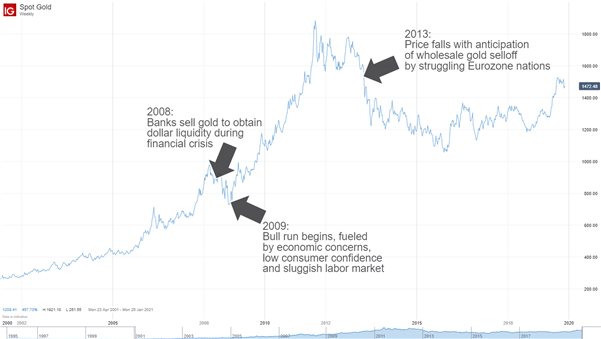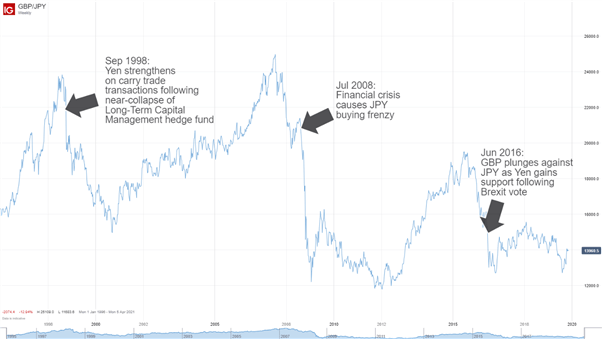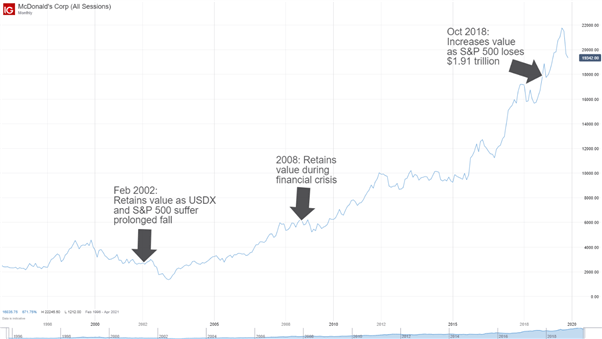Safe-haven assets are an essential antidote to economic downturns. They represent the markets that can protect traders and investors from losses when equities fall. Continue reading for our guide on the best safe-haven assets to choose, how they can safeguard your portfolio, and top tips for trading them.
What are safe-haven assets?
Safe-haven assets are where investors and traders put their money to protect against fundamental disruption. Safe-haven currencies , safe-haven stocks , gold , and US Treasuries have historically retained or increased their value during downturns or generally volatile markets, allowing protection against losses that growth equities may see in such conditions. Forex EA.
.

Safe-haven assets will typically show most, or all of the following characteristics:
1) High Liquidity
With significant forex trading volumes, you can enter and exit positions at the price you want without experiencing slippage . An example of a highly-liquid safe-haven currency pair is GBP/JPY . When signs of fundamental disruption arise, such as a Western recession, a common move is to go short GBP/JPY – and being able to enter the position at the original price will potentially mean higher profits as the price falls further.
2) Limited Supply
If an asset’s supply outpaces its demand, its value will likely erode. Markets such as gold, which have a scarcity of supply, are likely to have value residing in that scarcity, and potentially higher value still when demand increases. See more on the forces of supply and demand . MT4 EA.
3) Varied Utility
Does the asset have enough uses, for example in industrial applications, for it to have substantial demand? Copper , for instance, has a wide range of uses in infrastructure and agriculture in particular, and demand often increases when emerging markets ramp up development.
4) Enduring Demand
A true safe haven will be expected to retain demand in the future, so there should be confidence in an asset’s future utility. For example, while some commodities such as silver may have many industrial applications now, they may be replaced by other commodities for those applications in the future.
5) Permanence
An asset capable of deteriorating in quality may see lower demand in future as its utility declines.
The top safe-haven assets to trade
When it comes to trading safe-haven assets, you can choose currency pairs, US Treasuries, commodities and even defensive stocks. Here, we’ll look at some of the most common safe-haven assets to trade.
Gold
The most noteworthy safe-haven commodity is gold , which has historically shown a reliable negative correlation with stocks. This highly-coveted physical asset is in high demand, exists independent of monetary policy decisions, and has a tight supply.
In 2009 investors flocked to gold following the financial crisis, prompting a three-year bull run taking the price to $1,900/oz in August 2011. While the metal saw a torrid run in the two years to follow, a prolonged bear market beyond that was never sustained, reinforcing its safe-haven status. The chart below gives a picture of the main price moves since the turn of the century.

Japanese Yen
JPY is recognized as one of the most reliable safe-haven currencies due to its trade surplus and status as net creditor to the world, its demand in currency carry trade transactions, and the self-fulfilling prophecy caused by these factors. The chart below demonstrates three instances where the allure of JPY as a safe haven can be seen in risk-off markets over three decades.

Defensive Stocks
While growth stocks will often fall in wider market turmoil, there are certain safe-haven stocks that can retain or increase in value during economic hardship. That’s because selected companies in sectors such as consumer goods and utilities offer products and services that are in high demand even in difficult economic times. The chart below shows three examples of how McDonald’s weathered challenging economic storms this century. Forex trading.

Recommended by Ben Lobel
Build your stocks expertise with our equities outlook
US Treasuries
US Treasuries are considered safe havens due to their risk-free nature; the government repays these debt securities when the bills mature.
How to trade safe-haven assets
Now we’ve identified what markets to trade, how do you know how and when to trade them? Markets move in cycles, and traders should study the price of assets such as growth stocks, the US Dollar Index , and industrial major commodities , as well as fundamental factors such as employment data and GDP , to understand how the economy is performing. This will provide a better idea of when a downturn is likely to hit, and when to move a chunk of your portfolio into more defensive assets. Forex EA.
For example, three factors that may predict a downturn include:
- An inverted yield curve for US Treasury bonds: While a downturn is not guaranteed when the yield curve inverts, this event does have a history of preceding recessions.
- Poor business/consumer confidence data: If consumers and businesses aren’t confident about the economy, they are less likely to spend or invest for the future, which may cause contractions in growth, leading to downturns.
- Negative employment statistics: Employment stats can give an insight not only into hiring intentions, but also number of hours worked. When companies cut hours or hire temporary workers, they may be nervous about the state of the economy.
Safe-Haven Assets: Key takeaways
- Keep a close eye on the fundamentals: As discussed, fundamental factors such as employment statistics and business confidence can predict market downturns and economic prosperity alike. Accordingly, following as many fundamental factors as possible will give you a good measure of when to move into – and out of – safe havens.
- Consider technical indicators: Indicators such as the Relative Strength Index will reveal when an asset moves into overbought/oversold territory. Combined with fundamental factors, this can give a clearer picture of when to enter or exit trades.
- Historical price action matters: Bear in mind there will be times when a safe-haven asset may not behave as expected. For example, gold in 2008 might have been expected to soar as the financial crisis hit – but instead, reserves were cashed in by banks in favor of dollar liquidity. It was only the following year that the bull run began.
Further reading on safe haven investments
Looking to read more on safe havens that have greater macro scope and/or a stronger performance in ‘risk off’ environments? Read our guide to safe-haven currencies , and also don’t miss our safe-haven stocks piece for more specific strategies on the assets to consider when the markets get choppy.

 Signal2forex.com - Best Forex robots and signals
Signal2forex.com - Best Forex robots and signals




